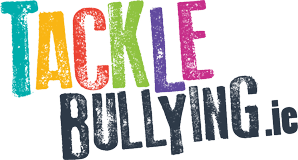Bullying is deliberate, unwanted behaviour that causes harm to others, and where the childor young person displaying bullying behaviour knows that their behaviour is or will beperceived as harmful by the child or young person experiencing the behaviour. Bullying isnot accidental or reckless behaviour. The harm can be physical (for example personal injury,damage to or loss of property), social (for example withdrawal, loneliness, exclusion) and/oremotional (for example low selfesteem, depression, anxiety) and can have a serious andlongterm negative impact on the child or young person experiencing the bullyingbehaviour. If the repeated harm is real for the child or young person experiencing thebehaviour but unintended by the other child or young person, this is not bullying but,importantly, must still be addressed under the school’s code of behaviour.
Bullying is targeted behaviour, online or offline, that causes harm. The harm caused can be physical, social and/or emotional in nature. Bullying behaviour isrepeated over time and involves an imbalance of power in relationships between two people or groups of people in society.
Building on many years of international research, the core definition above sets out clearcriteria to help school communities to prevent, correctly identify and address bullyingamong children and young people. Alleged incidents of bullying are however often complexand must be considered on a case by case basis.
There are many different methods of bullying behaviour including physical, verbal andrelational forms, and it can take place online and offline. There are also many differentmotives for bullying behaviour which can be understood on an individual level (for exampledesire for dominance, status, revenge) and/or on a societal level (for example identitybasedbullying such as racist, disablist, sexist or LGBTQ+ bullying). Bullying behaviour in schools isoften strongly influenced by attitudes, behaviours, norms and power dynamics that aredeeply engrained in our society.
The core elements of the definition are further described below:
Bullying takes the form of a systematic pattern of behaviour which is repeated over time.Single offline incidents of intentional negative behaviour involving an imbalance of powerare not considered bullying, but must still be addressed under the school’s code ofbehaviour. Posting a single harmful message/image/video online which is highly likely to bereposted or shared with others can however be seen as bullying behaviour.
In incidents of bullying, the child or young person experiencing the bullying behaviour findsit hard to defend themselves as a result of the abuse of a real or perceived imbalance ofpower. This imbalance of power may manifest itself through differences in size, strength,age, ability, peer group power, economic status, social status, religion, race, ethnic originincluding membership of the Traveller and/or Roma communities, sexual orientation, familycircumstances, gender, gender identity, gender expression, experience of the care system,disability or the receipt of special education. In incidents of online (or cyber) bullying, theimbalance of power may relate to online anonymity, technical proficiency and possession ofinformation/images/video, and the inability of the targeted person to remove offensiveonline material or escape the bullying.
What Types of Bullying Are There?
The most common forms of bullying are:
Verbal
Persistent name-calling, which hurts, insults or humiliates.
Physical
Pushing, shoving, kicking etc., includes assaults and threats of assault and damage to property.
Gesture
Threatening gestures – such as a throat-slitting gesture, or a gun-to-the-head gesture – or glances that convey threatening messages.
Exclusion
Socially isolating, excluding or ignoring someone.
Extortion
Forcing another person to give away their property or money.
Emotional
Rejection, Lack of proper stimulation (e.g. Fun & Play), persistent criticism, sarcasm, hostility or blaming of the child.
How Can I Tell If Someone Is Being Bullied?
Bullying can sometimes go unnoticed if you have not been made aware of it. It can be brushed off, unrecognized, or mixed up as something else. Sometimes students do not want to tell someone that they are being bullied. Indeed, 65% of young people who are bullied don’t tell an adult about it. This means that it is up to us to learn to spot the signs of bullying.
Some signs that a person is being bullied include:
- Visible signs of anxiety and distress.
- Targets may not want to say what is wrong.
- Unexplained bruising and cuts.
- Damage to property.
- Drop in school performance on tests.
- Excuses for not wanting to attend school.
- Lowered confidence/self-esteem.
- Difficulty sleeping.
- Repeated complaints of illness.
- Skipping after school sports.
Some of these signs (e.g. excuses for not wanting to attend school) can be noticed in a student’s behaviour as a result of any type of bullying.
If you suspect bullying, do not ignore it. Address it.
What Can My School Do to Prevent Bullying?
One of the most effective methods of bullying prevention in a community is to use the ‘Whole School Community Approach’. This involves the entire school community – teachers and other school staff, parents, students and the wider school community. This approach is aimed at bullying prevention and intervention that can help reduce bullying.
Some examples of this are:
- Awareness days to highlight the types of bullying.
- Increased playground supervision.
- An Anti-Bullying Policy.
Always remember that everyone within a school community has a responsibility to:
- Avoid engaging in bullying behaviour.
- Discourage and intervene when you witness bullying behaviour.
- Assist and give support to those who are targeted.
- Report bullying-related incidents.
How Can I Report Bullying?
You can report bullying in a number of ways, but we believe that the most effective way is to seek help from a trusted adult.
This could be a teacher, other school staff, parents or an older sibling. The most important part is to ask for help, because when you report bullying, you not only help the person being targeted, but also the person who is bullying and improve the environment where bullying is taking place.
